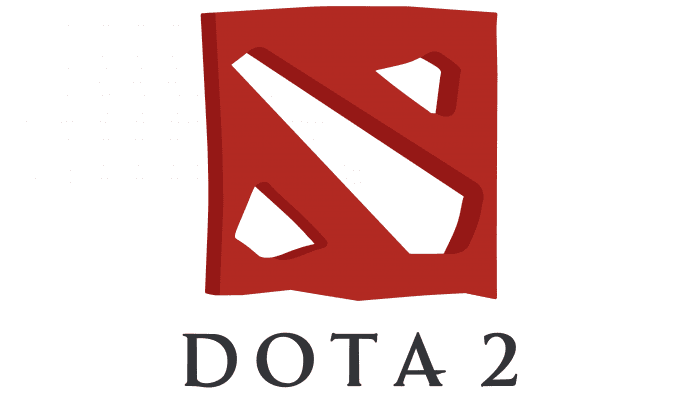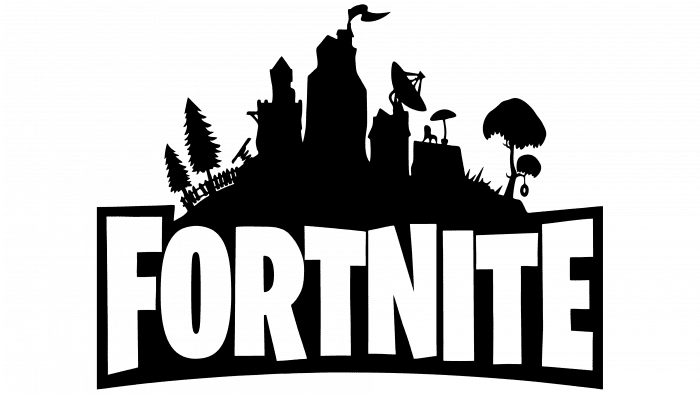The Oblivion logo captures the spirit of the game, enticing players with its captivating and enigmatic design.
The Oblivion logo features a prominent symbol in the form of the letter “O” from the Daedric alphabet, resembling two curved fangs with a dot between them. Positioned slightly above it, the name of the video game consists of rugged glyphs with sharp edges, giving the impression that each fragment of the lettering has been chiseled out of stone. The gray gradient enhances this effect, while the glowing red veins within the letters create the illusion of molten lava seeping through the surface. At the top, the phrase “THE ELDER SCROLLS III” is separated by a long horizontal line, maintaining the same style but with a different font.
The Oblivion emblem carries a profound meaning that reflects the essence of the game. The central element, the Daedric “O,” symbolizes the dark and mysterious nature of the game’s world. Its resemblance to fangs signifies the lurking danger and unpredictability that players will encounter throughout their journey. The rugged and stone-like appearance of the lettering conveys a sense of ancient and otherworldly realms, while the red veins suggest the powerful forces that reside within the game’s narrative.
The combination of the symbol and typography in the Oblivion logo represents the blending of mysticism, exploration, and peril. The Daedric “O” serves as a gateway to an immersive and fantastical realm, inviting players to step into a world where ancient secrets and epic adventures await. The rugged lettering evokes a sense of ancient prophecies and forgotten lore, while the red veins hint at the intense and visceral experiences that players will encounter.
Oblivion: Brand overview
| Founded: | March 20, 2006 |
| Founder: | Bethesda Game Studios |
| Headquarters: | United States |
| Website: | elderscrolls.bethesda.net |
Dive into the mesmerizing realm of The Elder Scrolls IV: Oblivion, a riveting action role-playing video game brought to life by Bethesda Game Studios and disseminated to the world by Bethesda Softworks and 2K Games. Since its launch on March 20, 2006, Oblivion has been transporting gamers into an enchanting and extensive open-world universe on Microsoft Windows and Xbox 360.
The brilliant minds behind the renowned Elder Scrolls RPG series, Bethesda Game Studios, have outdone themselves once more with Oblivion, the fourth entry in the lineup. Building on the lauded success of its predecessor, Morrowind, Oblivion offers an immersive gaming experience that leaves an indelible impression.
The journey of Oblivion’s development began in 2002. A monumental endeavor that called for over four years of unwavering dedication from the skilled team under the guidance of project leader Todd Howard. With its state-of-the-art graphics engine, enhanced physics, and advanced AI system, Oblivion was destined to become an enduring classic – and it did not fail to deliver!
In the fascinating world of Tamriel, an unknown prisoner is suddenly granted liberation by the Emperor. This newfound liberty comes with a charge – to find the Emperor’s lost son, abducted by the clandestine assassins, the Mythic Dawn. Players must navigate a vast open world brimming with lively towns, extensive cities, and perilous dungeons to reestablish the rightful heir on the throne.
Oblivion won the hearts of critics with its vast universe, engrossing narrative, and immersive gameplay. Celebrated for its avant-garde graphics and pioneering AI system, Oblivion was hailed as a magnum opus, clinching numerous awards, including the coveted Game of the Year from multiple industry periodicals.
Since its debut, Oblivion has ascended to classic cult status, with an impressive 3 million copies sold globally and inspiring a myriad of modding communities. These communities have breathed new life into the game by creating novel content and enhancements, affording players a refreshed sense of immersion.
Oblivion’s enthralling universe, compelling narrative, and trailblazing AI system have carved its place as one of the most adored RPGs ever. Bethesda Game Studios’ remarkable achievement continues to inspire gamers across generations, solidifying Oblivion as an eternal gem in the gaming cosmos.
Meaning and History
The brand identity of Oblivion is deeply rooted in the freedom of exploration and player choice. The game puts a heavy emphasis on offering the player a world filled with endless possibilities. Whether it be deciding the character’s moral compass, choosing the skills to hone, or defining the path to follow, the game allows users to create unique experiences that resonate with them personally.
The aesthetic of the game also contributes to the brand’s identity. It’s high-fantasy setting, populated with enchanting landscapes, mythical creatures, and antique architecture, enchants players. This timeless allure sets it apart and contributes to the game’s uniqueness.
Interactive and complex gameplay mechanics also define the brand. The depth and detail within the gaming experience, from nuanced character interactions to strategic combat, amplify the immersion and player commitment. As such, Oblivion continues to be a model of player-focused design, further solidifying its distinctive identity in the gaming world.
What is Oblivion?
Oblivion, as part of The Elder Scrolls series developed by Bethesda Game Studios, is a renowned name in the world of action role-playing video games. It presented a significant leap forward in immersive, open-world gaming when Bethesda Softworks and 2K first published it.
The game’s genesis rests on the innovative approach of Bethesda Game Studios. They envisioned a game world where players could explore freely, engage with dynamic characters, and shape their narratives. The game immediately captivated a wide audience on its release due to its impressive open-world design, intricate storylines, and complex character development.
Oblivion color codes
| Smoky Blackk | Hex color: | #0c0906 |
|---|---|---|
| RGB: | 12 9 6 | |
| CMYK: | 0 25 50 95 | |
| Pantone: | PMS Black 6 C |
| Nickel | Hex color: | #7e746c |
|---|---|---|
| RGB: | 126 116 108 | |
| CMYK: | 0 8 14 51 | |
| Pantone: | PMS Warm Gray 9 C |
| Turkey Red | Hex color: | #b30d00 |
|---|---|---|
| RGB: | 179 13 0 | |
| CMYK: | 0 93 100 30 | |
| Pantone: | PMS 485 C |




